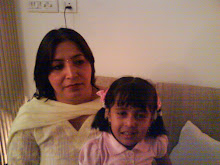How to Convert Decimals to Fractions
Converting decimals to fractions is not all that tough. Let me explain this with the help of an example.
Suppose you have the number 8.78 and you want to convert it to the form of a fraction. Here are the steps.
- First, count the number of digits after the decimal point. In this case, we have two digits.
- You multiply and divide the given number with another number. The multiplier is always 1 followed by as many zeros as the number of digits after the decimal point. So, since the given number has 2 digits after the decimal point, it will be multiplied and divided by 1 followed by 2 zeros (100)
- Then you simply have to reduce the resulting fraction to its simplest form by dividing the numerator by the common multiples which it shares with the denominator. And there you are, the resulting number is the fraction form of the decimal.
= 8.78 * 100/100
= 878 / 100
= 439/50
If you want to convert this into a mixed fraction, divide 439 by 50. The quotient will be the main number, the remainder will be the numerator and the dividend will be the denominator. Hence, the mixed fraction is 8 39/50.
So this is how to convert decimals to fractions or mixed numbers. Let us take a similar example by seeing an example about converting repeating decimals to fractions. Now a number with repeating decimals does not terminate. So what do you do in this case? Let's take the number 0.29898...
- The first step is to find out how many digits repeat. In this case, the number is 2. And the repeating digits come after '2'. So let's make that 3 digits. Hence, you multiply by the number with 1 and three zeros. i.e. 1000.
- Hence you have 298.9898. Now divide only the integer by 1 less than what you multiplied the original number with i.e. 298/999. And this is your answer!
Example: 0.136136136.
multiply
= 0.136136136 * 1000 (3 repeating digits)
= 136.136136136
divide integer to get the answer
= 136 / 999 (one less than the multiplier)

No comments:
Post a Comment